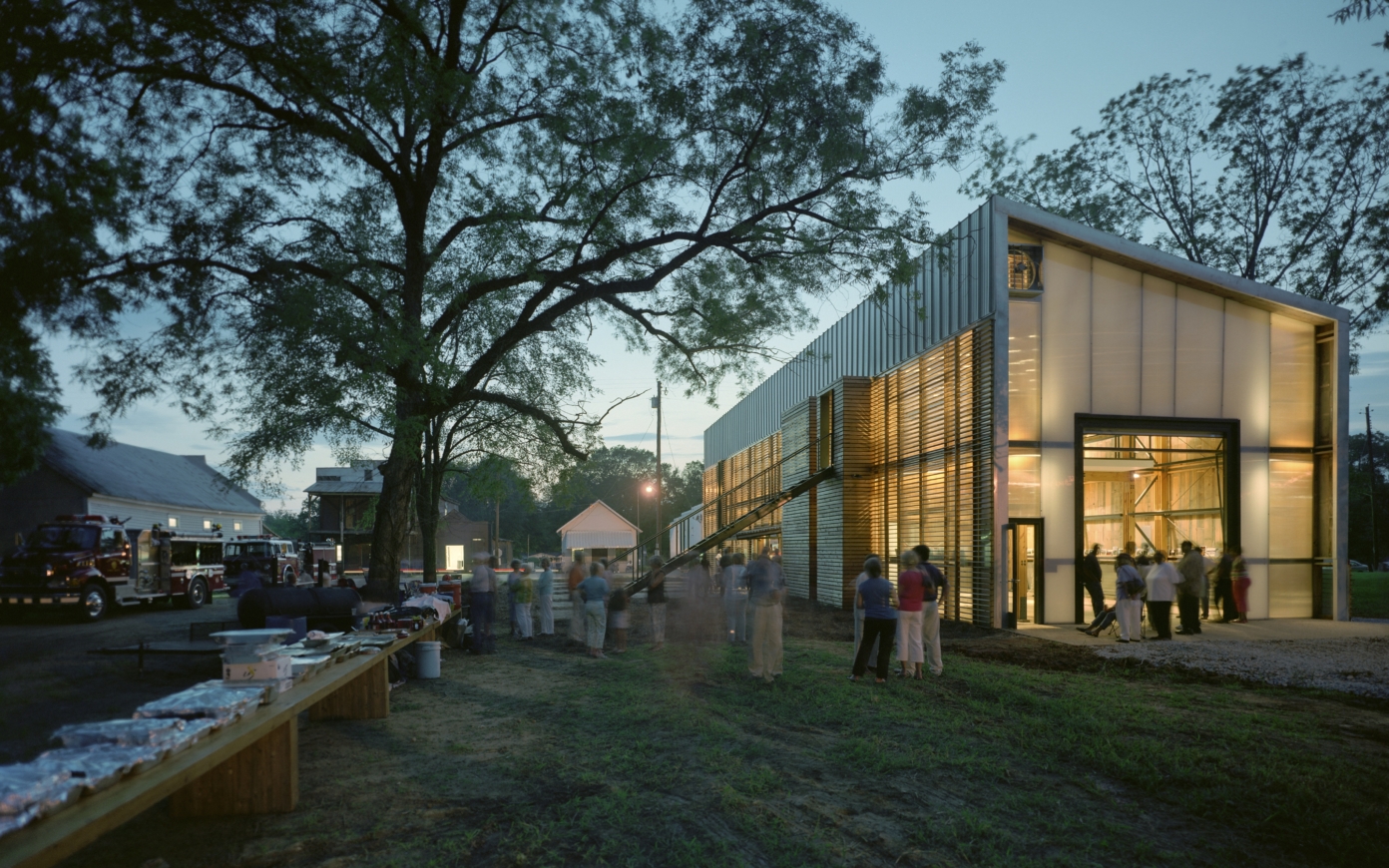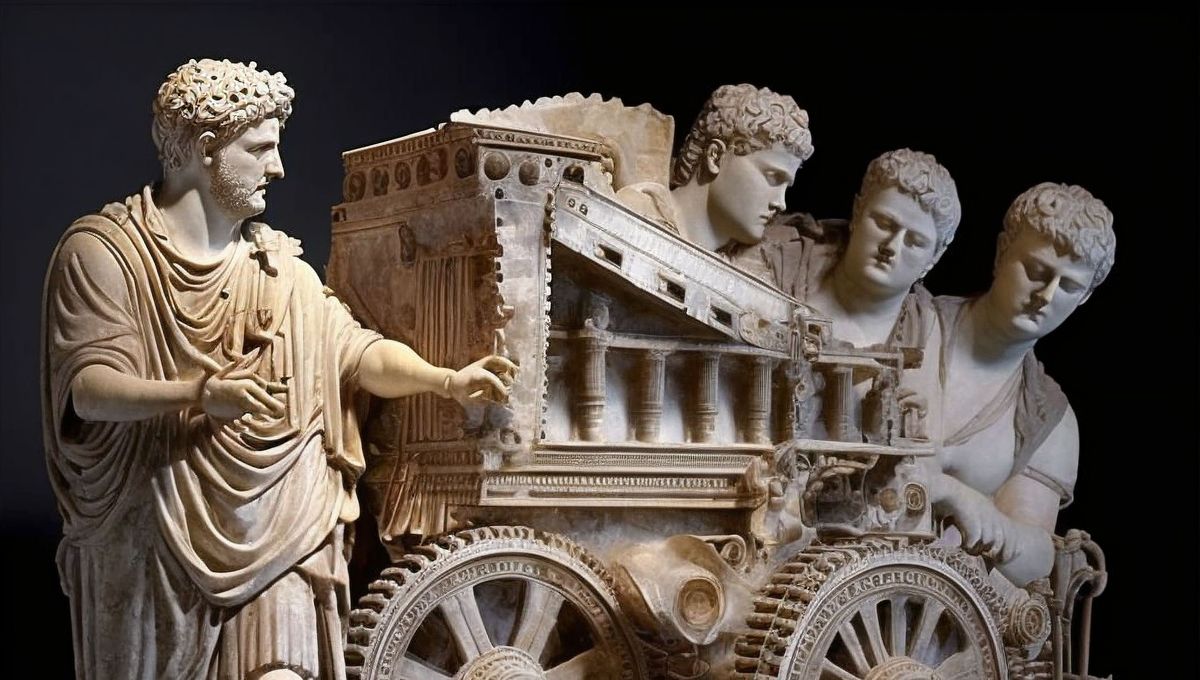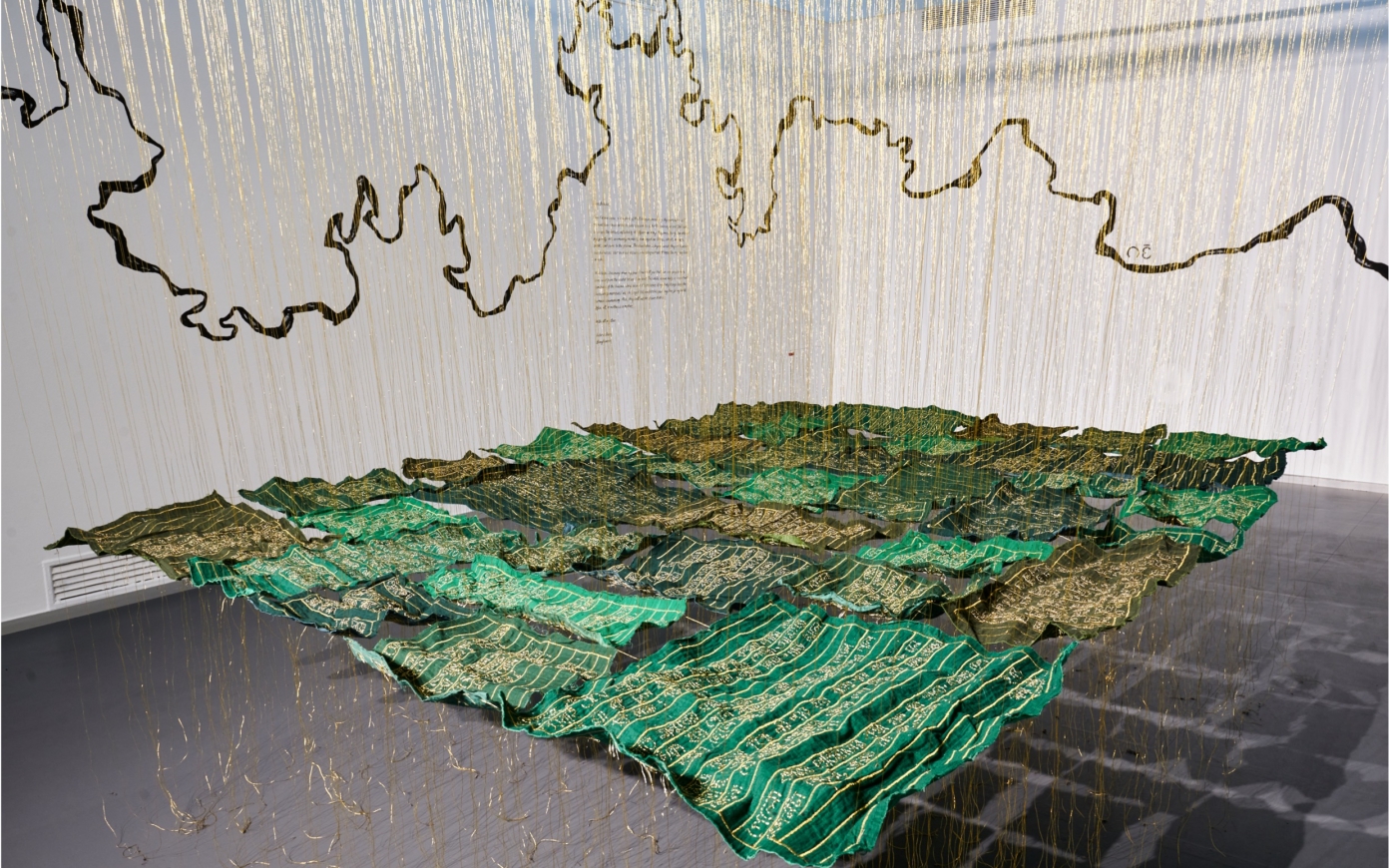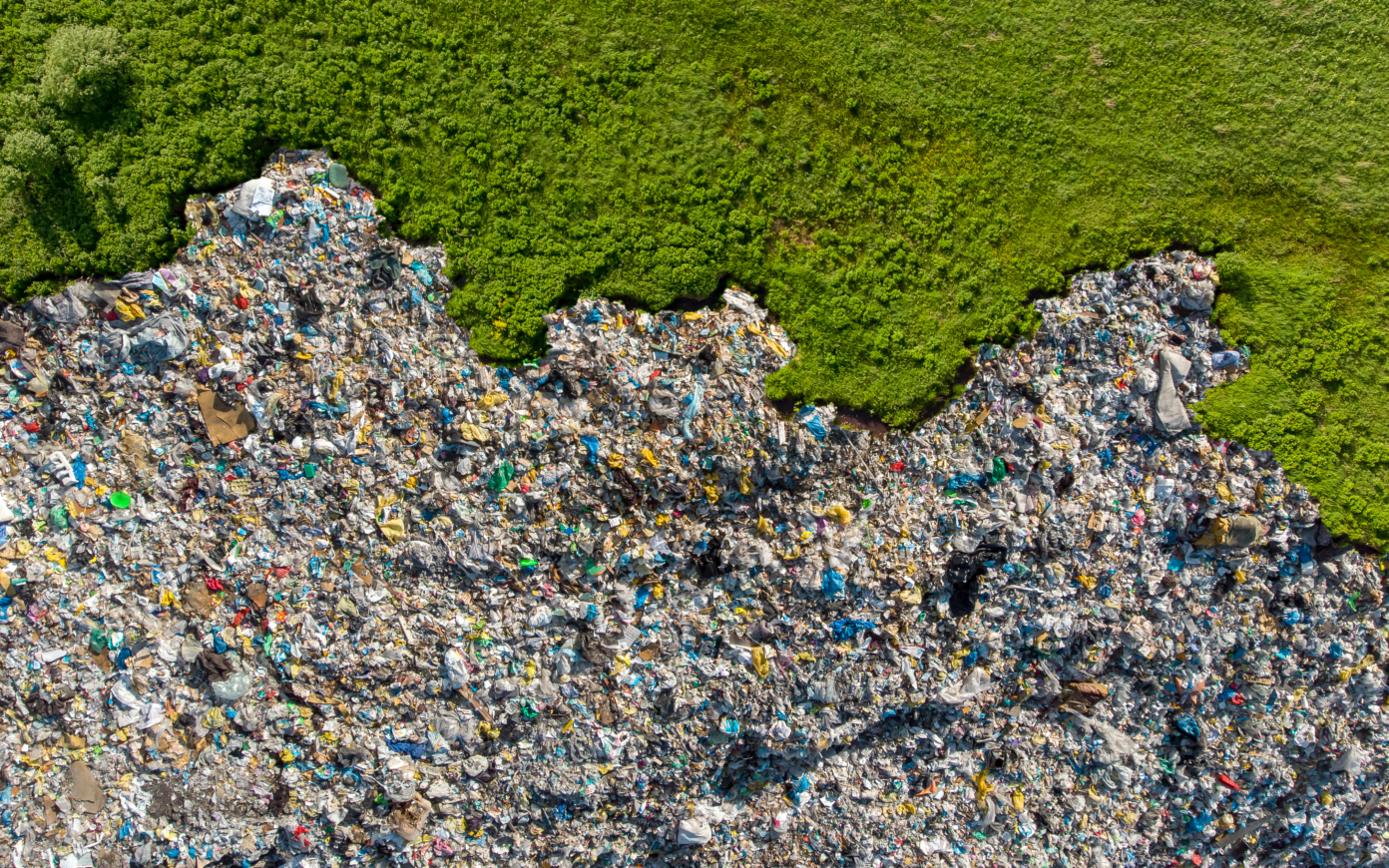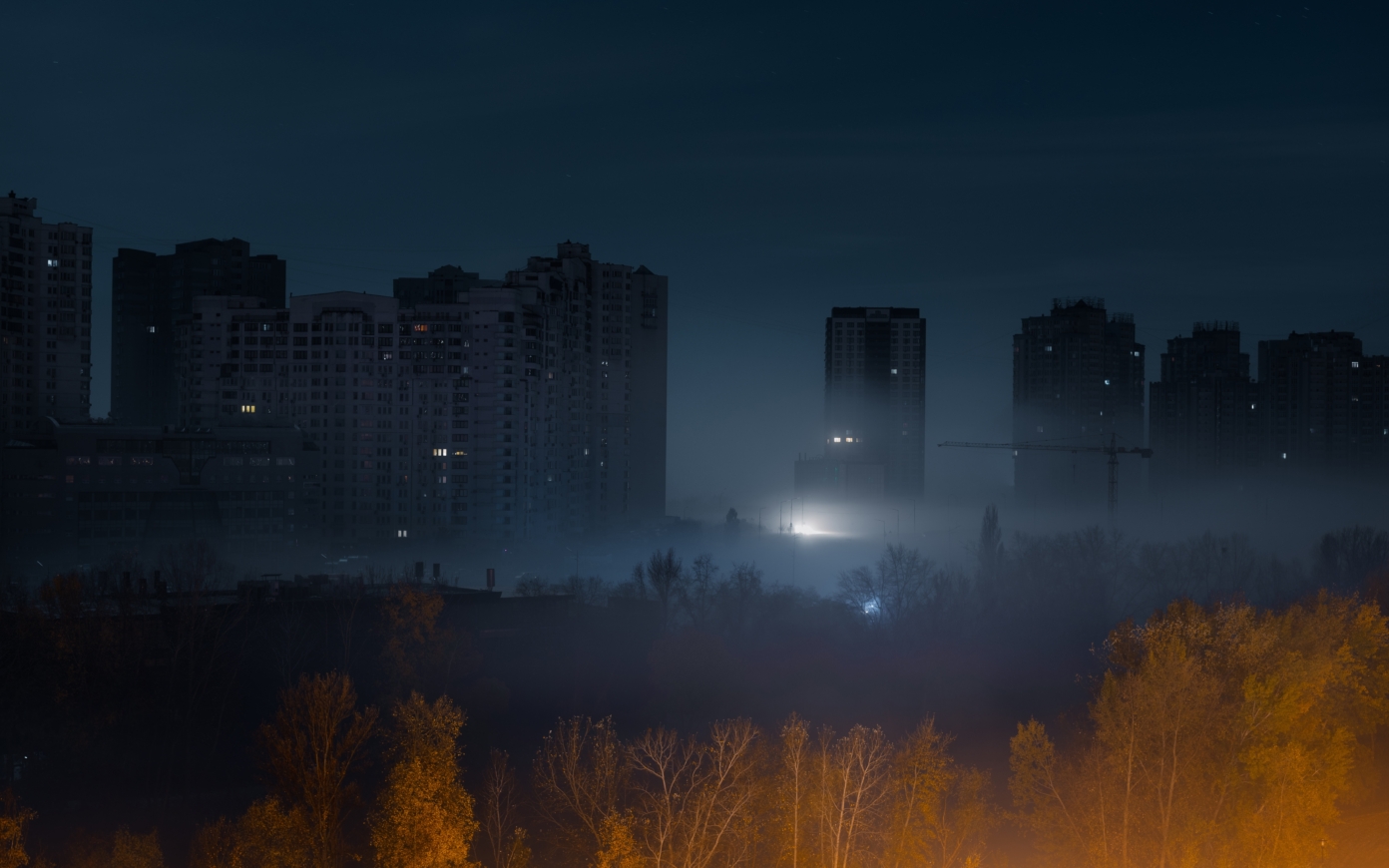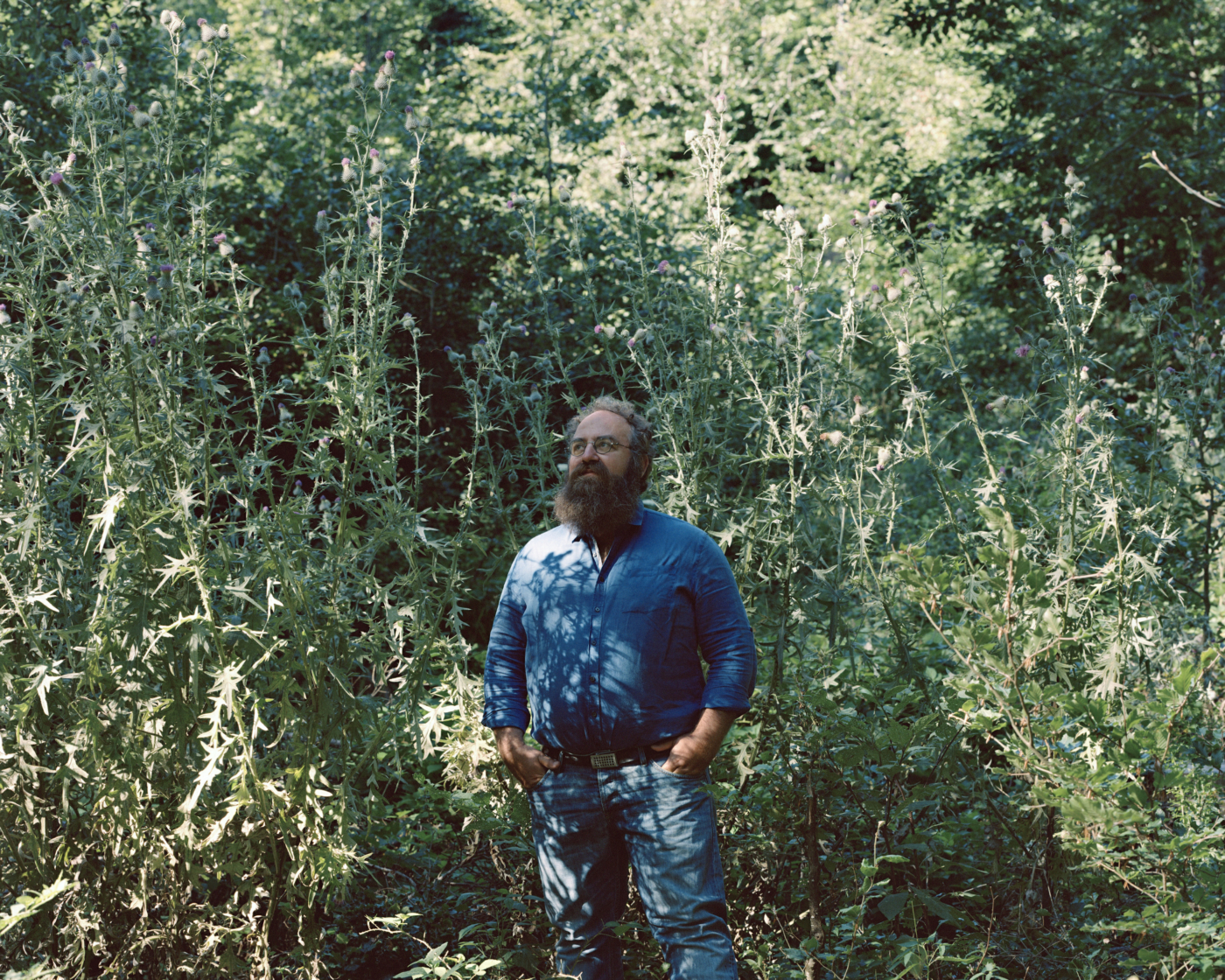Imaginary in a Techno-Sciences-Economy Age

- Publish On 19 April 2017
- Pierre Musso
The reason why the unfolding urban revolution represents such an upheaval for our societies is because it revaluates both our conventional and modern value systems, which were the foundations of the development of our societies. Western observers are overwhelmed because they have suddenly been deprived of meaning, narratives and imagery—precisely what would enable them to see themselves in this new world. Our representations of the world were neither natural nor eternal, but to understand their history and how they were formed is essential to building a new collective narrative of our dwelling on Earth. The philosopher Pierre Musso exposes the historical depth of our representations and describes the generalized technological turn in society as a major force affecting our imaginaries, but also the paramount role taken on by the networks and the cyclical play of metaphors between machine and organism that was developed to better grasp urban space.
Pierre Musso is a philosopher and PhD in political sciences. He teaches information and communication sciences at Télécom ParisTech and the University of Rennes.
Artificial worlds
As a philosopher, do you feel that we are living in a time of rupture or revolution? If so, then what do you see as its major characteristics ?
In certain respects, we are always living in a time of rupture. We have to be clear about the terms we use and clearly define what we mean by “rupture” and “revolution.” What we can be sure of, however, is that beyond the obvious phenomena such as globalization, aging in the Global North, and urbanization, the major event in the Western world is the accumulation of technical innovations. Three successive industrial revolutions have left their mark: that of 1800, with the engine and the railway network; that of 1900, with electricity, gasoline, and automobiles; and that of the present day, with the onset of information technology and its encounter with the world of telecommunications, which together I call tele-computerization.
Not only are these technical innovations accumulating, but they are also accelerating. Everything is happening very fast and we must think at the same time as we create these artifacts—a challenge that we have never faced in our history. We are continually creating technical innovations that we don’t have time to understand or assimilate. One thing comes after another, and moreover, international economic competition (especially between large companies) happens at the speed of technological innovation. From a more philosophical point of view, to quote Georges Balandier, we are constructing new New Worlds, artificial worlds.
Cultural and anthropological transformation is the order of the day. But rather than a rupture, let’s think of it as a generalized form of accelerated technologization of society, individuals, cities, and places. A transformation of technology that leads to the augmented human, the connected city, and perhaps in the future, the Internet of objects and nano-biotechnologies.
The techno-scientific economy is an extremely powerful new reference point. The distinction between research and applied science has almost completely disappeared. Yet, paradoxically, this economy is coupled with a symbolic shortcoming, because we have lost the founding myth of progress along the way.
Scientists still believe in scientific progress and technicians still believe in technical progress, except that this grand narrative is shattering and caving in. The power of technology has thus lost its role as a provider of meaning. Quite the contrary—it systematically creates not well-being but a sense of unease, as well as cultural, social, and economic inequality. A gap exists between the power of technology (which was generated in the Western world as a function of an essentially Christian view of the world, before being revisited by Descartes, Bacon, and Marx, and then transferred into the secular god of techno-science) and a certain type of dismay, because we have both conquered power and lost sight of meaning.
Our history is inextricably linked to techno-science, which involved the domination of nature in addition to the spirit of conquest. It began in 1492, with America. Conquering the external and not simply nature—anything weaker, outside of us—is a centerpiece in the history of Western Christianity. It was not, as Max Weber would have it, simply a case of Calvinist sects (an interesting phenomenon, but one which remains relatively secondary). We have always looked at other populations in a Western and dominating way. Today, globalization has put a mirror up to the West that poses the question, “What is my vision of the world? Does it still hold firm?” This is due to its own internal crisis, the collapse of its myths, and its confrontation with civilizations that do not share the same vision of the world. It forms part of the identity crisis in the Western world and an interesting potentiality of globalization, in a cultural sense, above and beyond the economic-industrial competition that often takes the limelight. Our world is full of uncertainty; our symbolic references have crumbled in the face of powerful worldviews that are not the product of the domination of nature, or scientific and technical forms of rationality.
Another important component of this shift, this upheaval at the heart of the philosophy of progress itself, is that when it was being theorized, particularly by Condorcet at the beginning of the nineteenth century, it opened up two paths: one of capitalism, which was to be pursued by way of the economy of techno-science, and one of socialist utopias, on which I have done quite a bit of work—Henri de Saint-Simon, Robert Owen, Charles Fourier, and many others. These two different worldviews structured the two previous centuries, between the French revolution in 1789 and the fall of the Berlin Wall in 1989. Yet they have given way to the dogma of efficiency. Social and political utopias have been absorbed by technological utopias.
At the most, what we’re living is the triumph of science fiction, of Jules Verne, of Hollywood blockbuster films—that is to say a vision of the world in which otherness (the symbolic is otherness, the great Other, God, etc.) is no longer a dividing point for the world as it was for at least a century, roughly speaking between the Russian Revolution and the fall of the Berlin Wall, when it reached its climax during the Cold War.
Today, otherness is technology—it’s the robot, the technologically-infused living forms, the human-machine. The alter ego is within us in this new form of otherness—it is scientific and technical production. That’s what accounts for its symbolic weakness. We’ve taken what little symbolism remains of the celestial, spiritual, and ideological realms and transferred it to technical objects. This fall is broken into three strata—strata, because I’ve never learned history in terms of linearity, but in terms of geological layers—on the surface is 1989, and then another sedimentary layer just below which was a longer period, that of the secularized techno-scientific vision of the world, and finally, another deeper stratum, roughly one thousand years ago in the case of the Western world, which was the shift from religious otherness to techno-scientific otherness. One advantage of thinking in terms of historical strata is being able to see that those things that are buried can surface again, not unlike the lava in a volcano.
That is what we have partly forgotten, because that’s how technology works: newer technology replaces the old. Innovation is rather intensive, for example with the iPad, smartphones, and connected cars. Yet old forms of technology are coming back, right inside of technological development itself. All too often, we have a present bias and think in terms of tabula rasa, of ruptures.
Meaning works deep within. For example, the Saint-Simonean schism thinks of the industrial revolution in reference to the Gregorian schism of 1075, when Pope Gregory distinguished temporal power from spiritual power. On one side, there is the spiritual, the symbolic; and on the other, the temporal power that we’ve brought together in techno-science, primarily from the seventeenth century onwards with Galileo, Bacon, Descartes, etc. These debates have gone on quietly for a thousand years and we tend to forget that. Not everything started with the Internet, or in the 1980s, even if there was indeed an intense acceleration of technical innovation over the course of that decade. Nothing can be understood without referring to history. Memory and forgetting must be combined.
Machines and nature
Getting back to the role of science and the technical, Edgar Morin, Bruno Latour, and Gilbert Simondon explain classical, Cartesian science as having brought us to a dead end through its simplifications, most significantly by separating the organic and the inorganic. They suggest that this would explain the defiance as regards progress and the multiplication of living and metabolic figures in academic research now that we’ve moved into the Anthropocene era.
There is one primary aspect: modern science, as in the Cartesian view of the world, is rational and quantitative; it distinguishes subjects and objects. At the same time, it underestimated—not to say evacuated—everything that came from the imaginary realm. There was science, or the sciences, and then everything that was on the level of creation, imagination. Wasn’t it Malebranche who said “imagination is the resident madwoman” (la folle du logis)? We still had to wait for Kant, almost a century and a half later—and even then his remarks within philosophy were marginal—to witness a rehabilitation of the imaginary and imagination. The two aren’t the same, but let’s say here that they include anything that doesn’t fall under strictly rational, positivist forms of reflection in the field of human knowledge. On a certain level, we have been constrained by scientific knowledge since the seventeenth century. The imaginary always worked alongside that, in literature and the arts, beginning with the Romantic reaction of the nineteenth century. Two separate approaches have always been used to understand the world: one through reason and the other through creation and imagination.
Measurement and the quantitative evaluation of the world are intricately linked to the invention of clocks. If there has indeed been a shift today (which, as we can see in our lifestyles, there likely has been), it is that computers have become super-clocks. If you think about what a computer really is, it is of course a calculator in the Boolean sense, but it is first and foremost a super-clock that counts. We only have to input what is happening in the financial world or in the media, and this clock which counts within a billionth of a second has its “finger on the button,” so to speak—especially as regards finance and the economy. A play of mirrors goes on between the way we think of and create the world, and the way in which technical objects, such as clocks, confront and create the imaginary. It isn’t just about dreaming about removing the principle of non-contradiction, which already isn’t too bad, but about understanding that it is we who create the imaginary, in our works and our objects.
I agree with Simondon (and others) when he says that we must rehabilitate both objects and machines because they are an extension of humanity—culture, crystallized. It is absurd to think that there is a kind of social exteriority to the technical that comes along like some sort of fate, imposing itself, forcing us to react. It doesn’t make any sense. Integrating objects as part of the production of society is the most appropriate thing to do. Where there is a problem is in our relationship to nature.
Confronted with the technological explosion that we have created, it is clear that we have been searching for a way to compensate. All imaginaries are ambivalent—saying the word “Hell” automatically implies “Heaven.” Therefore, if society generates an extreme focus on technology, it is necessary to find a counter-balance. That is why nature has come back into every domain, from organic food to green cities and factories. Yet nature has always been a fiction; it doesn’t have a definition.
What is nature? Throughout the history of the Western world, this idea has taken on many different forms, most of which have been conceived in opposition to religion. Rousseau identified this well: he did not yearn to return to a natural state but used this fiction to reflect upon the idea of civilization. Nature as an idea allows us to put into perspective what it is that we are doing when we multiply so many machines and techniques. Throughout history, the meaning of nature has changed; however it has always been a contrapuntal force. It is “anti”, as Clément Rosset put it; anti-nature is nature as anti. Anti-technique, anti-industry, anti-religion, anti-politics, anti-cities—the list goes on. It is anti, and it is used as a reflector.
Many young architects are interested in the complex processes of organic growth. Do you associate nature with the living as they do ?
I’ve been thinking about the idea of life and the living, because it’s a theme that goes back a long way in history. It is associated with the transition from the eighteenth to the nineteenth century. Georges Canguilhem aptly analyzed the different models of living things throughout history. For example, from Aristotle until the nineteenth century, living things were interpreted in the light of technical mechanisms—the body functioned as a machine, replete with pulleys and cords. The contemporary model is cybernetic, because computers act as references for the body. We compare the brain to a computer, and we attempt to make computers come alive. Throughout Western history, and I insist on the word “Western” because we are only speaking of a fraction of the world, there is and always has been a dialogue between the inorganic machine and the organic living being. The transhumanist merger of man and machine has been perceived as a substitute to the Man-God.
When it comes down to it, we only manage to bring together what is separated—these are all just representations. When we commit ourselves to this path we have already agreed to assume that nature and humans are distinct from each other. This separation is already a worldview, even if afterwards we attempt to reconcile it. Let me put it differently: is the specific quality of being human to be a package of organic meat? In my opinion, it is more language and symbolism that define humans. They are beings who function symbolically. I say this for one very simple reason: humans are the only living beings that know they are going to die one day. Animals cannot create abstract forms of symbolism—even though they can have their own languages—because they do not know they will eventually die. How do we deal with this mystery and this angst about our inevitable death? We create symbolism, and we have language to help us match each external reality with a linguistic representation, with the help of signs and symbols.
Cities are immense creations of human artifice; we can say they are machine-like, or organic, or even alive. This play of metaphors between machine and organism appears throughout the history of Western philosophy. We have always made these kinds of analogies; these comings-and-goings between organic and mechanic models. When you look at the history of networks, the corporeal metaphor emerges on all levels. The body is like a network, and the technical network is made like a natural network, and everything is intertwined, from the simplest to the most complex, such as the Internet. This kind of imagery should really be seen as an example of the power of images to endure throughout history. Can we find other analogies? Indeed we can, and we do—we seek them out, but the image of the technological organism keeps coming back, and transmogrifying. It has been there since Aristotle and it has maintained such a hold on our imaginations that it has been turned inside out and back again, all the way to the present-day neo-cybernetic paradigm. Myths function by repetition.
From progress to uncertainty
You’ve been speaking about networks, and in your book, Critique des Réseaux (Critique of Networks), you explained that even though networks have become more present than ever, they have gone beyond the level of conceit to the level of deceit, as Gilles Deleuze put it, in his concept of commercialization. What could be missing is the addition, not of a centralized network, but of the unexpected, of chaos, of randomness, perhaps.
What is first is the level of uncertainty, because thanks to progress, to techno-science, we have believed ourselves to be in a world of certainty. Yet a problem has been created by the technical: we have to find something to settle the score. That is what three-quarters of political elites seem to think. “Greenhouse gases? They’ll soon find a technical solution for that.” We used to live in a world of apparent certainty, thanks to the science of technological advancement, and to the narrative of progress. Now we live in a world of uncertainty. It forces us to find other ways of thinking, in addition to rediscovering our spirit of adventure. Looking back at the year 1492, Saint-Simon had a really nice image, “Those who had left from Europe and were in the middle of the ocean, wanted to turn around and go back because they couldn’t see the promised land. However they were halfway—the way back was the same distance as the way ahead, to the Americas.” They had to have the spirit of adventure and the thirst for discovery. In today’s world, we really need to have audacity. We are constantly confronted with uncertainty; we have to invent new models, but above all, we have to cultivate our spirit of exploration and adventure.
When we look back at the history of the sciences or of artistic creation, at the beginning, there is always trial and error, intuition, or experimentation. It is about not knowing everything, and just doing—all the while knowing that we do not know how. However, we have remained so anchored in our world of certainty, mostly because of our belief in omniscience, that we have lost our thirst for chance and happenstance to an extent that we daren’t even admit. We are only just beginning to rediscover elementary things, such as the fact that for ages, humanity—and probably three-quarters of the rest of the planet—lived among risk and exploration. Such an obsession with precaution for the sake of precaution, and the effort to eliminate risk, doesn’t make sense. We lose the humanness of humans; beings which are naturally uncertain. One example of this is smart cities: which attempt to observe, to know, and to predict everything. This is the neo-cybernetic model developed with the technology of detection, cameras, and geolocation, based on the idea that visibility means security and information means knowledge, which is false.
The cyberspace’s territories
The very first issue of Stream was called “Exploration”: it was about the way in which space is known and finite, and that now it is time that provides us with a sense of adventure. This gives me an opportunity to ask you about the transformations that you see in our relationship to space-time.
Indeed, space and time have undergone transformation—due to the forces of contraction and the ubiquity of logic. There has especially been a hybridization or interlocking of physical territories with informational ones, which is also a territory of action. Cyberspace, that is, the space created by networks of computers and machines, allows us to increase our activities and to widen the sphere in which action is produced. Thanks to the Internet, if I own a small business that sells sheep’s cheese, for example, I can sell around the world. Without a doubt, this is not about the creation of a second territory, but rather an increase in the expanse of the original territory, which itself is a concatenation of shared social representations. A given piece of territory is a system of representations embedded in space—it is their collective representation of the past, of the lived present, and the future.
Information technology and communications equipment allow us to increase and to broaden our spheres of action and meetings. Cities are increasingly a matter of management of multi-layered temporalities, rather than a simple question of distance. Mobility is no longer about moving from point A to point B: today, the main issue is being able to articulate both personal and collective temporalities, with the opportunities that have been provided to us by social networks (via smartphones) in the city itself, and in real-time (what Dominique Boullier calls “habitèle”). It is the articulation of these different individual temporalities with the temporalities that are imposed by the managers of information systems that creates mobility and the city’s identity itself. Indeed, temporalities have become more important than space. That isn’t to say that space, and physical mobility, is not an important issue—quite the contrary. What is important in mobility is that above and beyond the transformation of space-time, it is the transformation of experiences that counts: we go to work but we also stumble upon an important event or even a happenstance occurrence of love-at-first-sight. What makes mobility is the transformation or the repetition of individual and collective experiences—especially in a society that is as fragmented as ours. Solidarity between social classes has imploded and individualism has triumphed, and all the while we have been attempting to weave it all back together in all kinds of ways. Most notably this happens through technical networks, because technology is the major reference point of our time. As regards the space-time continuum, it is important to note that the unit of measurement has changed: we are no longer in Euclidean space. Instead, we invent new forms of metrics and hyper-metrics. We live in a new space-time, with all the contradictions in time, dilation, and distances that entails.
From a practical point of view, enriching the urban experience is one of the avenues for research in urban architecture. What perspectives do you have on this idea from the standpoint of your philosophical work ?
There are two key ideas. The first one is co-creation—having people participate in the definition of their urban environment thanks to dynamic representation and crowdsourcing processes. There are immense possibilities at that level. Thanks to dynamic 3-D simulations and other digital innovations, we can explore possible outcomes and create public debate, initiate crowdsourcing opportunities, directly work on these possible outcomes, capture contributions from the larger spectrum of society, confront different possible visions about the use of digital technologies to define the city, design the urban space or have it shift with its residents and users.
The second idea is that with social networks, and especially with smartphones—and what they will become—there is a constant possibility of reconfiguring the city. The city becomes elastic and reconfigurable by means of its events—I am not speaking about the built environment itself, although it is necessary to have a number of reconfigurable things—but of the possibility of creating or participating in events on a continuous basis, creating opportunities or avoiding risks. It always has to do with time: depending on mobility options within a city, collectively and individually, we can participate in things—here a commercial event, there a cultural one or a demonstration—something that is amplified through social networks. The crux of the matter is to articulate the major configurations of urban management, which are programmed by the managers of all the urban networks with their information systems, with this random, anarchical, and creative side, that of the people who experience and define the city in real time.
The management of time and experiences in an urban context cannot only be based on major information systems such as with the dream of the smart city. These systems are useful for security, but the issue is articulating them with the randomness which emerges from car sharing and the events, meetings, and projects of its inhabitants.
The two major challenges are there: how is it possible, at the level of design, to have the potentials of both sides meet—one side being the digital world at its largest, and the other being imagination and dreams. When I refer to this creative element, I am not talking only about the utopias of designers or urban planners, however brilliant they may be, but also—and indeed especially—the representations of the everyday users of the city. Regarding the question of life within the city, what seems important is allowing the urban environment to be reconfigured according to what is happening in real time. We have the technical instruments to do so, and socially people are willing partners in major cities. We can therefore go much further and continuously create opportunities to act and to meet people.
It is necessary to work on the link between information systems, especially those of cities. The production system is therefore the information system. What defines a company is therefore its brand, its core competencies, its information system, and its distribution network. It’s also what will increasingly define a city: the relationship between these information systems with all the mini- and microsystems of their users—whether they are driving, walking, or at home. The city has always been a network system but perhaps I am getting carried away by my affinity for networks. Nevertheless, whether we use the metaphor of the organism, the biosphere, or any other to say that life is all about networks, or whether we’re thinking in terms of machines, after all it doesn’t really matter.
Indeed, the idea that networks define the city is fundamental—be they technical, social, cultural, or economic networks. We are in the city to make things and to meet people. What defines a city is what happens there, meetings and actions, promoted or generated by networks of all kinds.
(This article was published in Stream 03 in 2014.)

